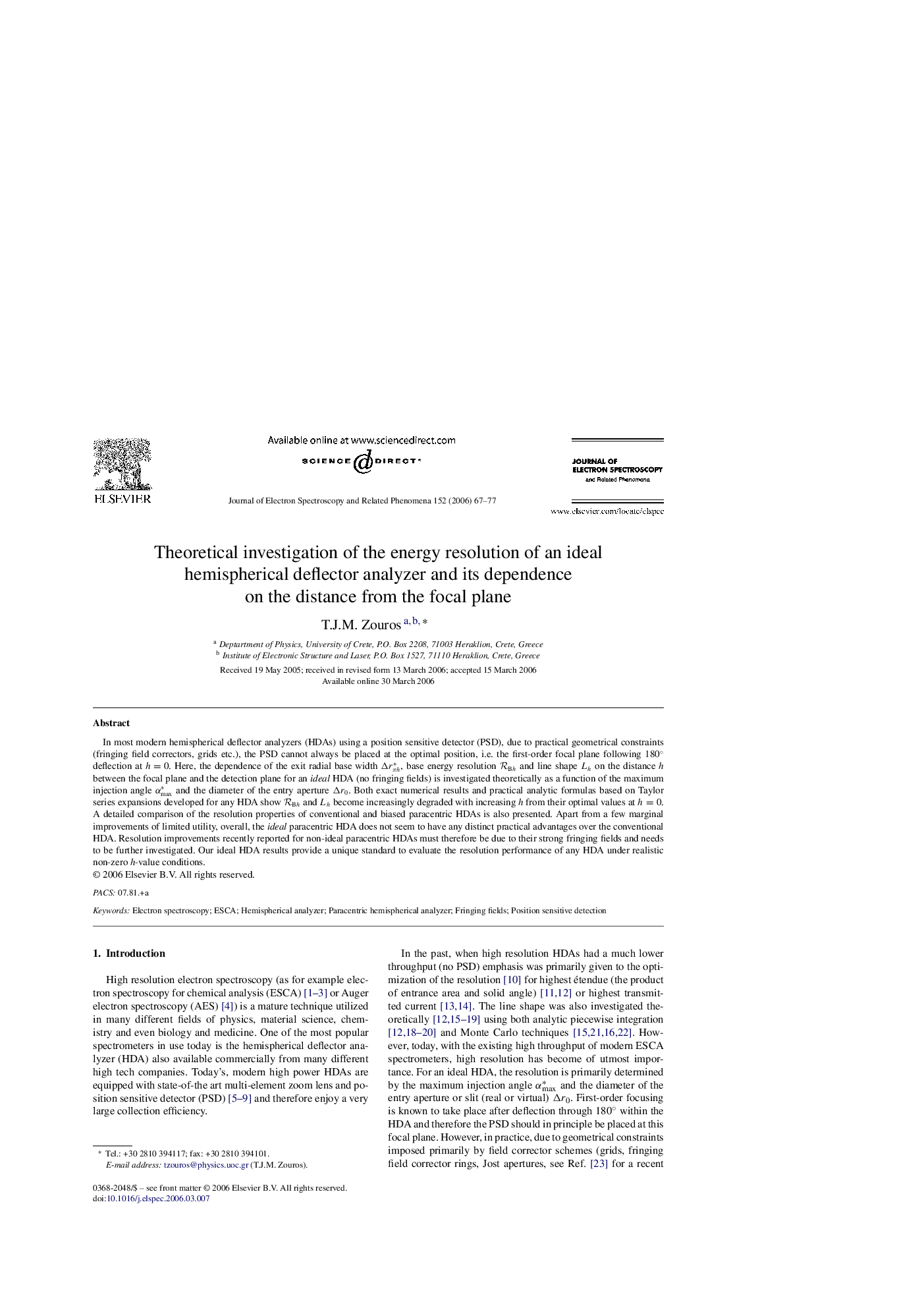| Article ID | Journal | Published Year | Pages | File Type |
|---|---|---|---|---|
| 5397148 | Journal of Electron Spectroscopy and Related Phenomena | 2006 | 11 Pages |
Abstract
In most modern hemispherical deflector analyzers (HDAs) using a position sensitive detector (PSD), due to practical geometrical constraints (fringing field correctors, grids etc.), the PSD cannot always be placed at the optimal position, i.e. the first-order focal plane following 180° deflection at h=0. Here, the dependence of the exit radial base width ÎrÏhâ, base energy resolution RBh and line shape Lh on the distance h between the focal plane and the detection plane for an ideal HDA (no fringing fields) is investigated theoretically as a function of the maximum injection angle αmaxâ¡â and the diameter of the entry aperture Îr0. Both exact numerical results and practical analytic formulas based on Taylor series expansions developed for any HDA show RBh and Lh become increasingly degraded with increasing h from their optimal values at h=0. A detailed comparison of the resolution properties of conventional and biased paracentric HDAs is also presented. Apart from a few marginal improvements of limited utility, overall, the ideal paracentric HDA does not seem to have any distinct practical advantages over the conventional HDA. Resolution improvements recently reported for non-ideal paracentric HDAs must therefore be due to their strong fringing fields and needs to be further investigated. Our ideal HDA results provide a unique standard to evaluate the resolution performance of any HDA under realistic non-zero h-value conditions.
Related Topics
Physical Sciences and Engineering
Chemistry
Physical and Theoretical Chemistry
Authors
T.J.M. Zouros,
